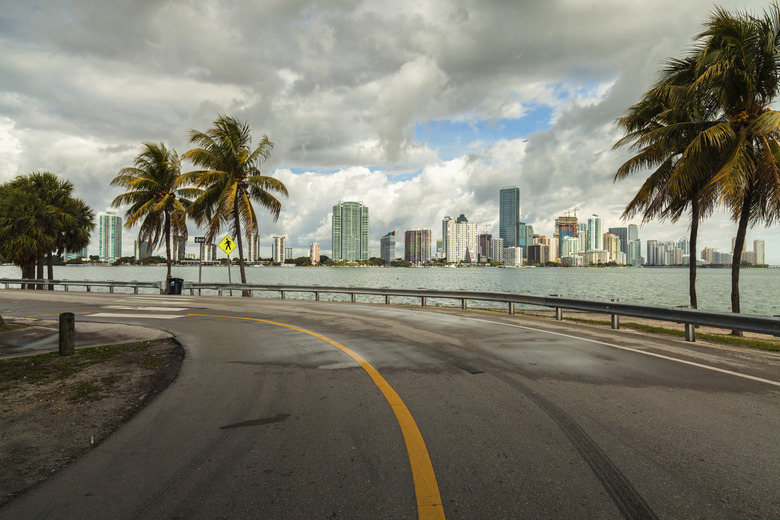How Does Humidity Affect Weather?
The amount of water vapor in the air varies from trace amounts to about four percent of all atmospheric gases, depending on a variety of factors. The percentage of water vapor present in the air, also known as humidity, determines how you feel when you are outside, as well as the health of the animals and plants around you. In fact, some plants and animals only live in regions with high humidity, and some only live in areas with very low humidity. Humidity also determines the formation of clouds and the probability of a weather event, such as a thunderstorm or crippling winter blizzard.
Absolute and Relative Humidity
Absolute and Relative Humidity
The most common measure of the amount of moisture in the air at a given time on a given day is the relative humidity. This measure differs from absolute humidity, which is simply the ratio of water vapor to dry air in a given volume. Absolute humidity is independent of temperature.
Relative humidity is expressed as a percentage – it's equal to the amount of moisture present relative to the maximum amount of moisture the air can hold at its current temperature. When the relative humidity is 100 percent, the air is saturated, and moisture either condenses as dew or falls out of the air as precipitation.
Cloud Formation
Cloud Formation
Humidity can also impact the volume of clouds in the sky above you! When the sun is shining, the ground absorbs heat and radiates some of that heat back into the atmosphere, warming the air close to the ground. Warm air is lighter than cool air, and it rises, forming an upward convection current.
When the rising air near the ground is full of moisture – which may be the result of evaporation from a nearby lake or ocean – the moisture rises with the warm air. The air cools in the upper atmosphere, and because cool air can hold less moisture, the water vapor condenses into mist or, if the temperature is cold enough, ice particles. This condensation is what you see when you look at clouds from the ground.
Coastal and Mountainous Climate Zones
Coastal and Mountainous Climate Zones
Where you live can also impact the humidity of the air around you, from nearby water bodies to natural landforms. In the water cycle, clouds block the sun and cool the air underneath them, which increases the relative humidity of the air. Once the air is saturated, precipitation starts falling, but even before that, the air can become foggy and misty. Eventually, condensation and precipitation cool the air enough to stop convection, and the clouds break.
This cycle repeats itself frequently near large bodies of water but hardly ever occurs in places lacking a source of evaporating water, such as deserts. However, clouds can form near mountains even if the humidity is low because updrafts on the slopes push air higher. When the air cools near the mountain peaks, whatever moisture it contains condenses.
Thunderstorms and Hurricanes
Thunderstorms and Hurricanes
Humidity can also impact the formation of storms. Warm air can hold a large amount of moisture, and both the air and moisture rise quickly. In the upper atmosphere, the moisture cools rapidly, forming large clouds that spread out in the reduced pressure conditions. The rapid upward flow of air creates low-pressure areas near the ground, and cooler air rushes in to fill these areas.
The results of this circulation of air and moisture are the dark clouds, wind and rain of a thunderstorm. Hurricanes develop in the extreme moisture conditions and high temperatures over tropical oceans during the summer months. Because they are fueled by the quickly evaporating ocean water, hurricanes typically lose energy and dissipate when they make landfall.
Cite This Article
MLA
Deziel, Chris. "How Does Humidity Affect Weather?" sciencing.com, https://www.sciencing.com/humidity-affect-weather-10033063/. 30 September 2021.
APA
Deziel, Chris. (2021, September 30). How Does Humidity Affect Weather?. sciencing.com. Retrieved from https://www.sciencing.com/humidity-affect-weather-10033063/
Chicago
Deziel, Chris. How Does Humidity Affect Weather? last modified March 24, 2022. https://www.sciencing.com/humidity-affect-weather-10033063/
